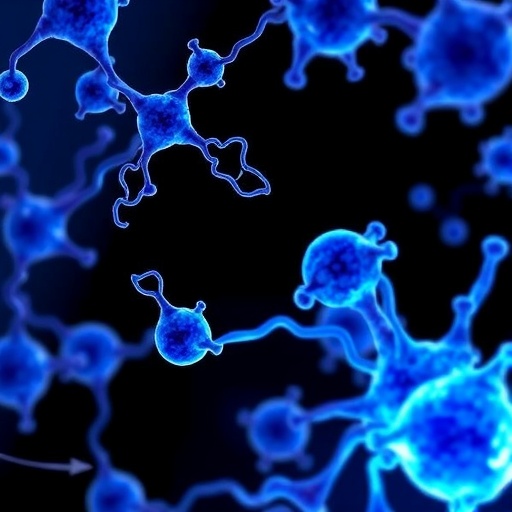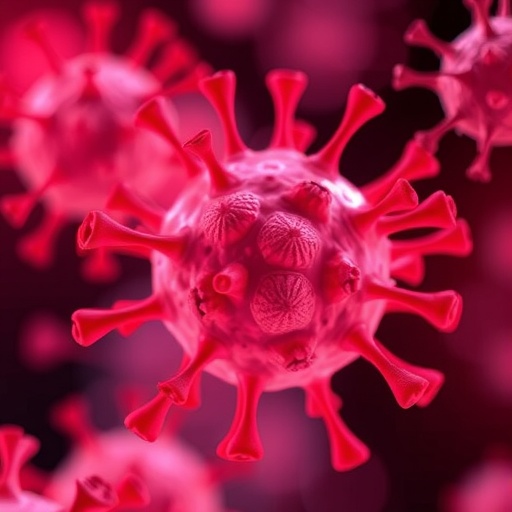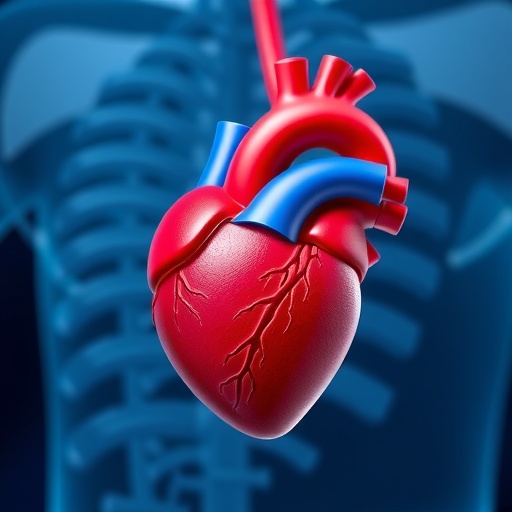In a landmark breakthrough poised to redefine neurodegenerative disease research, Uche Medoh, a rising star and Science Fellow at the Arc Institute, has elucidated the elusive biosynthetic machinery behind bis(monoacylglycero)phosphate (BMP). This unique lipid, long recognized for its protective role within cellular lysosomes, had mystified scientists for more than fifty years regarding its precise biosynthetic origins. Medoh’s discovery, honored with the 2025 Science & SciLifeLab Prize for Young Scientists, paves the way for innovative therapeutic approaches targeting a spectrum of debilitating neurodegenerative disorders including Amyotrophic Lateral Sclerosis (ALS), Parkinson’s, and Alzheimer’s.
Medoh’s journey was marked by resilience and scientific rigor. His research initially focused on CLN5, a gene implicated as a risk factor in neurodegenerative diseases and the causative agent of Batten disease, a fatal pediatric lysosomal storage disorder. Despite years of dedication, a proposed functional model for CLN5 was disproven after late-night experimental analyses, forcing Medoh to reconsider his hypotheses. This pivotal moment of reconsideration underscored the importance of following empirical data over preconceived notions, a principle that ultimately catalyzed his groundbreaking discovery.
The failed model did not render the data meaningless. Instead, it revealed a striking correlation between CLN5 and lipid metabolism in lysosomes, the intracellular organelles involved in molecular recycling and degradation. Specifically, the data indicated CLN5’s involvement in the breakdown and processing of lipids closely tied to BMP accumulation. Prior to this, BMP’s synthesis was considered independent of CLN5, but these findings compelled Medoh to hypothesize that CLN5 might function as BMP synthase itself.
To validate this hypothesis, Medoh designed a critical mass spectrometry experiment aimed at detecting BMP synthesis in vitro. By isolating purified CLN5 protein and its substrate molecule, he sought definitive molecular evidence of enzymatic activity responsible for BMP formation. Remarkably, the mass spectrometer revealed the expected molecular signature corresponding to BMP synthesis, confirming CLN5 as the enzymatic catalyst for BMP production. This confirmation not only solved a decades-old biochemical mystery but also introduced a new molecular target for therapeutic intervention.
Following this revelation, the pace of research accelerated rapidly. Medoh’s team is now dedicated to unraveling the broader biochemical pathway of BMP synthesis, including identification of accessory proteins that facilitate substrate availability for CLN5. Such insights hold immense potential for pharmacological modulation of BMP levels, aiming to enhance its cytoprotective functions in neurodegenerative contexts. Furthermore, Medoh’s ongoing work examines the paradoxical effects of CLN5 gene knockout in disease models, exploring scenarios where reduced BMP synthesis exacerbates pathology versus conditions where CLN5 inhibition might paradoxically ameliorate symptoms.
BMP’s significance extends beyond neurodegeneration. Given its central role in lysosomal function, BMP intersects with oncological and virological pathways. Cancer cells often exploit lysosomal mechanisms to survive nutrient deprivation, leveraging BMP-enriched compartments to maintain metabolic homeostasis under duress. Similarly, certain viruses co-opt BMP-dependent pathways to evade cellular degradation, enhancing their intracellular persistence and replication. Understanding CLN5-mediated BMP synthesis thus has far-reaching implications across diverse fields, from cancer biology to infectious diseases.
The discovery ushers in an exciting era dubbed “BMP biology,” inviting multidisciplinary inquiry into how subtle modulation of this lipid can confer systemic benefits against a wide array of diseases. The ability to fine-tune BMP production through targeted manipulation of CLN5 activity offers a novel therapeutic avenue with potential utility in conditions historically resistant to effective treatment. The ripple effects of this research stretch from fundamental biochemical understanding to translational medicine.
What distinguishes Medoh’s achievement is not only the scientific insight but also his methodological paradigm, as noted by Valda Vinson, Executive Editor of the Science family of journals. His openness to discarding unsupported models while embracing the underlying data exemplifies the collaborative and dynamic nature of modern scientific endeavors. Support from SciLifeLab further amplifies the significance of celebrating young scientists who advance knowledge frontiers with clarity and intellectual humility.
Medoh’s discovery also reemphasizes the critical importance of lysosomes as hubs of cellular health, far beyond their traditional roles. These organelles have emerged as crucial arbiters in maintaining homeostasis, orchestrating the degradation and recycling of intracellular components while influencing signaling pathways implicated in cell survival, immunity, and disease resilience. BMP’s role within this landscape is increasingly appreciated as a molecular linchpin orchestrated by CLN5 enzymatic action.
As research progresses, the focus will likely shift towards elucidating how BMP manipulation can be harnessed clinically. Small molecules or biologics that enhance CLN5 function could mitigate lysosomal dysfunction seen in neurodegeneration, while inhibitors might serve as cancer therapeutics by disrupting tumor cell survival mechanisms. Viral pathogenesis, too, might be targeted through BMP pathway modulation, opening avenues for antiviral strategies.
In sum, the identification of CLN5 as the long-sought BMP synthase is a transformative development that integrates biochemistry, cell biology, and disease pathology into a coherent framework with vast therapeutic promise. This new understanding not only resolves a half-century enigma but fundamentally reshapes how scientists conceptualize lysosomal lipid metabolism’s impact on health and disease. The scientific community eagerly anticipates the next chapters of exploration and clinical innovation spawned by Medoh’s pioneering work.
Subject of Research: Biosynthesis of bis(monoacylglycero)phosphate (BMP) via the CLN5 enzyme and its implications for neurodegenerative diseases and lysosomal biology.
Article Title: Unveiling CLN5 as the Enzymatic Catalyst of BMP Biosynthesis: A New Frontier in Neurodegenerative Disease Research
News Publication Date: June 2025
Web References: 10.1126/science.aec9580
Keywords: Neurodegenerative diseases, lysosomes, bis(monoacylglycero)phosphate (BMP), CLN5, Batten disease, lipid metabolism, mass spectrometry, ALS, Parkinson’s disease, Alzheimer’s disease, cancer biology, viral pathogenesis
Tags: Alzheimer’s disease lipid metabolismbis(monoacylglycero)phosphate biosynthesisCLN5 gene implicationsempirical data in scientific researchinnovative neurodegenerative therapiesNeurodegenerative disease researchParkinson’s disease researchpediatric lysosomal storage disordersresilience in scientific discoveryScience & SciLifeLab Prizetherapeutic approaches for ALSUche Medoh scientific breakthrough





